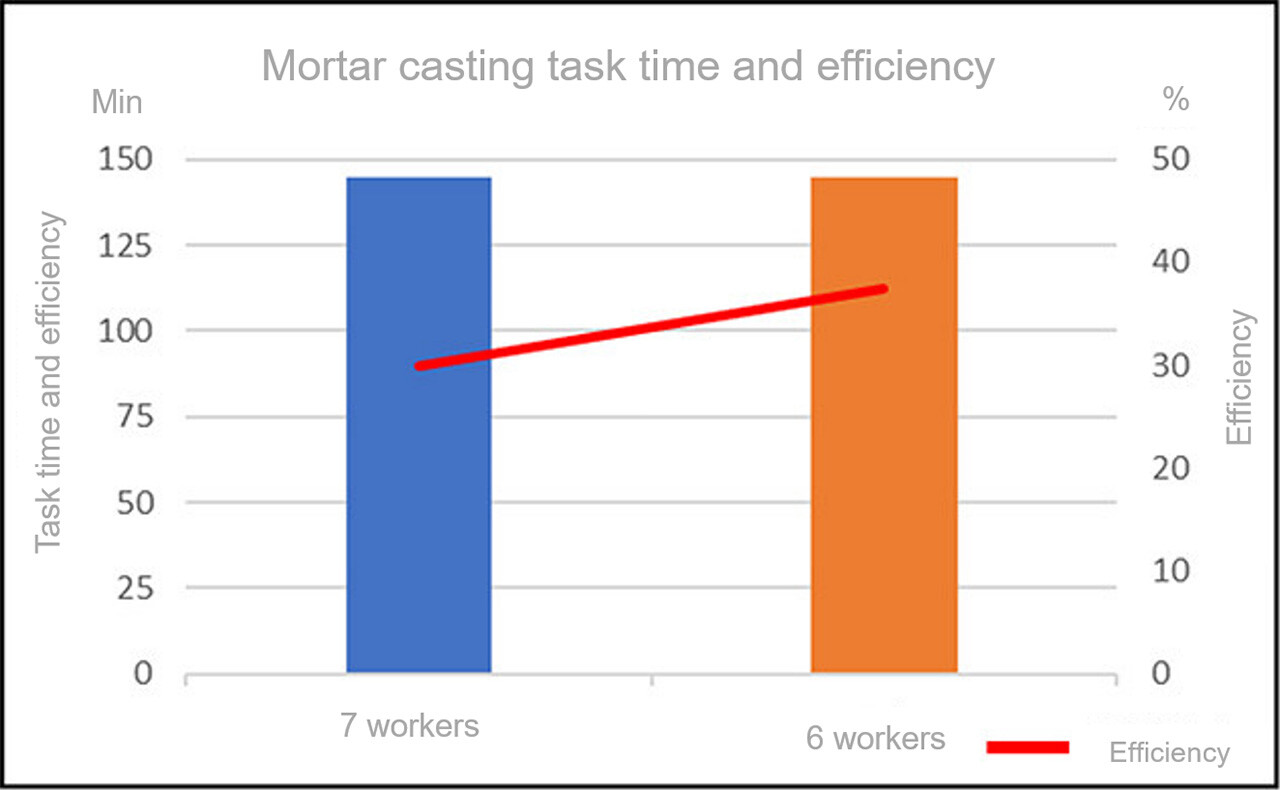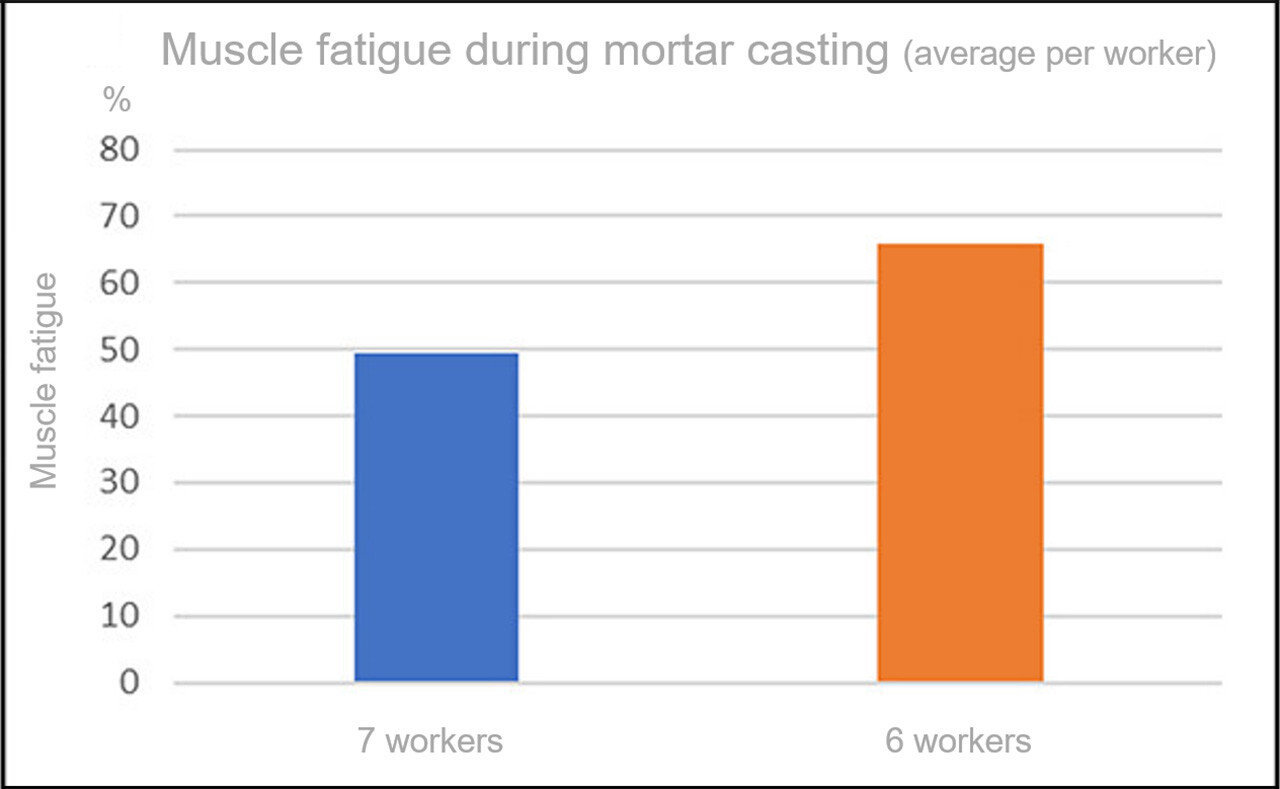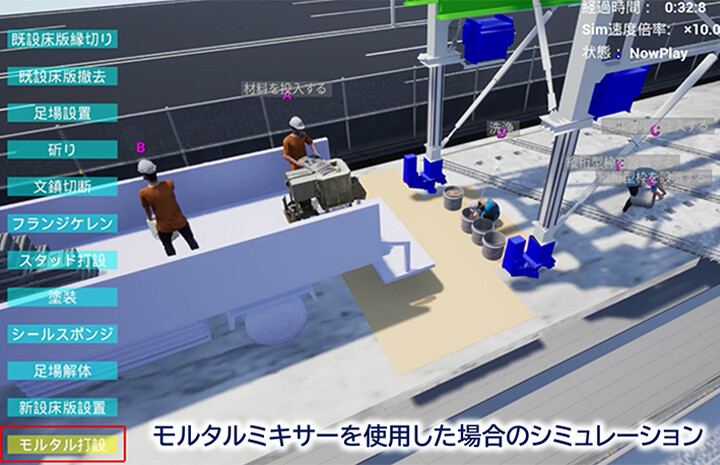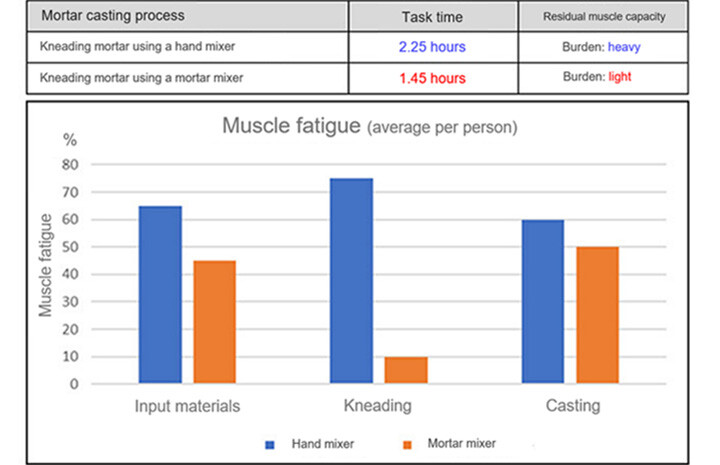GEN-VIR™, a Construction Simulator Developed by Obayashi Corporation and Toyota Motor Corporation's Frontier Research Center, Uses Posture Reproduction and Muscle Fatigue Analysis to Improve Tasks and Reduce Worker Burden
-
Technologies
Obayashi Corporation has been using the GEN-VIR(*1) construction simulator, jointly developed with Toyota Motor Corporation's Frontier Research Center, for the Tomei Expressway Renewal Project (Tomei Expressway Tamagawa Bridge)(*2) to help construction site workers to improve work efficiency and prevent occupational accidents on construction sites.
By using GEN-VIR's function for reproducing work postures on the simulator and its upgraded muscle fatigue analysis function, Obayashi was able to improve processes and tasks and reduce the physical burden on workers.

Background
GEN-VIR is a simulation technology that uses 3D computer graphics to reproduce construction sites and operations and enables users to plan work processes and the assignment of workers in detail. Obayashi has used GEN-VIR to improve tasks on the Tomei Expressway renewal project, which requires careful planning because of the limited work periods and available space on the expressway. One cause for concern is that pushing for work productivity improvements increases the physical burden on workers and exacerbates their fatigue levels, so a function was introduced to analyze these parameters.
GEN-VIR's Installed and Improved Functions
Automated work posture reproduction
This new function has been added to help reproduce work posture of workers on a virtual site that closely mimics work posture on actual sites. Using this function to analyze muscle fatigue helps quantify muscle fatigue with a higher degree of accuracy.
Muscle fatigue analysis
Improvements were made to the function for calculating muscle fatigue over time during each task. This made it possible to calculate numerical values for muscle fatigue that more closely mirror the situation during actual work.
*Please refer the report by Toyota Motor Corporation's Frontier Research Center (Available only in Japanese)
Improvements Made
Considering the introduction of processes and machinery that take worker muscle fatigue into account
Regarding the mortar casting operations, we had planned to assign seven workers to one team. However, after conducting a construction simulation using GEN-VIR with a team of six workers, we found that a team of six workers was a more efficient configuration. This resulted in reduced waiting time for workers and enabled casting to be completed in the same amount of time as with a team of seven workers.
Construction simulation results (task time and degree of muscle fatigue)
Mortar casting procedures were broken down and muscle fatigue analyzed to help investigate ways of better dealing with increased muscle fatigue caused by a reduction in personnel. The analysis showed that kneading mortar using a hand mixer constituted a particularly heavy burden on muscle strength. Installing mortar mixers was considered as a way to help reduce the burden of mortar kneading.

Simulations incorporating improvements, and procedure briefings
Construction simulations using a mortar mixer confirmed that work time could be reduced by 40 minutes compared to a hand mixer and that muscle fatigue was reduced. The simulation video was also used at procedure briefings to confirm construction procedures, personnel allocations, and safety measures.
Both site supervisors and workers said that they were able to work smoothly because they could visualize staff allocation and work processes through the simulation. It therefore helped develop a common understanding all members at the site in advance, even for tasks in which they had no experience, leading to an improved, more efficient work process that reduced the burden on workers.
Construction simulations using a mortar mixer (task time and residual muscle capacity )
Going forward, Obayashi will utilize GEN-VIR on expressway renewal and other construction sites and develop further functions and improvements. Obayashi will use GEN-VIR to improve productivity and reduce the burden on workers as it helps to construct safe and reliable infrastructure.
- *1 GEN-VIR
A 3D computer graphics-based work simulation technology designed to improve on-site worker productivity and mitigate risks.
For more details, please refer to the report from Toyota Motor Corporation's Frontier Research Center.
URL:https://global.toyota/jp/mobility/frontier-research/42215095.html (Available only in Japanese) - *2 Tomei Expressway Renewal Project (Tomei Expressway Tamagawa Bridge)
Zone: Tomei Tamagawa Bridge, both directions (E1 Tomei Tokyo IC to Tomei Kawasaki IC)
Outline: Replacement of the concrete deck slabs of the aging bridge with new deck slabs
Construction period: From late November 2021 to late November 2024 (approximately three years)





